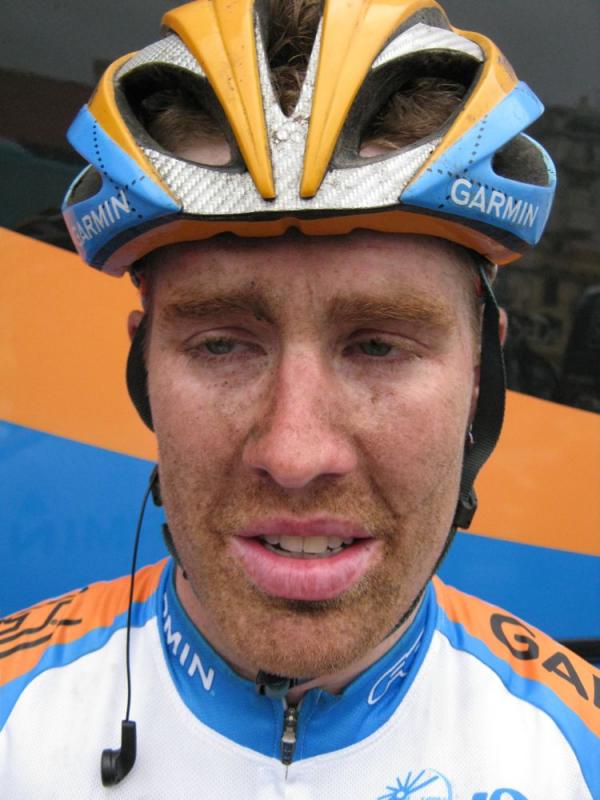Farrar disappointed after missing San Remo sprint
American sprinter avoids crashes but loses contact on the Poggio

Tyler Farrar arrived at the Garmin-Transitions bus next to the finish straight of Milan-San Remo with his face covered in grime and the fatigue of racing much of the 298 kilometre event on wet, greasy roads.
While the top-ten was packed with the names of the most of the best sprinters in the world Farrar's name was missing. He finished 42nd, 1:40 behind winner Oscar Freire (Rabobank) after losing contact with the leaders on the descent of the Cipressa and then on the climb of the Poggio.
He finished in the main bunch, just a few places ahead of Bernhard Eisel (HTC-Columbia), George Hincapie and Alessandro Ballan (BMC). But that was of little comfort. Unlike Tom Boonen, he was not satisfied with his race.
"I felt good today and so I'm pretty disappointed not to get a result," Farrar told Cyclingnews.
"Unfortunately a gap opened on the descent of the Cipressa and that cost me something. I had Johan [Van Summeren] and Dave [Millar] there to help me and we came back but then they started the Poggio and it was all over after that. I think the weather made it a pretty hard day for everyone."
Farrar perhaps used up his San Remo luck earlier on the on the Passo del Turchino. On wet, slippy road numerous riders crashed as the peloton went through the very narrow, unlit tunnel that leads to the Mediterranean side of the Ligurian hills.
Michael Rogers (HTC-Columbia) was one of many riders to lose control of his bike on the slimy mud that coated the tunnel floor. Somehow Farrar stayed up. It meant he was in the front part of the peloton, while other riders, including Mark Cavendish (HTC-Columbia) had to chase for almost 100 kilometres along the Italian coast. However, despite avoiding the chaos of the Turchino tunnel, Farrar's luck turned on the race's later ascents.
Get The Leadout Newsletter
The latest race content, interviews, features, reviews and expert buying guides, direct to your inbox!
"There was a terrifying crash in the tunnel at the top of the Turchino," he said. "It was just so dark because it’s such a narrow old tunnel. People went down right in front me. I jut tried to go straight in the hope of not hitting anyone and somehow I stayed up."
"That meant I was near the front on the Turchino and so I was in the front group when it split. That meant I could just cruise through the race and I thought it was a good sign. Then things went wrong later on."

Stephen is one of the most experienced member of the Cyclingnews team, having reported on professional cycling since 1994. He has been Head of News at Cyclingnews since 2022, before which he held the position of European editor since 2012 and previously worked for Reuters, Shift Active Media, and CyclingWeekly, among other publications.